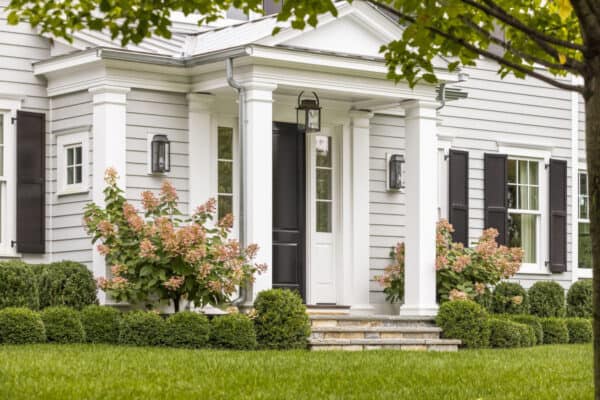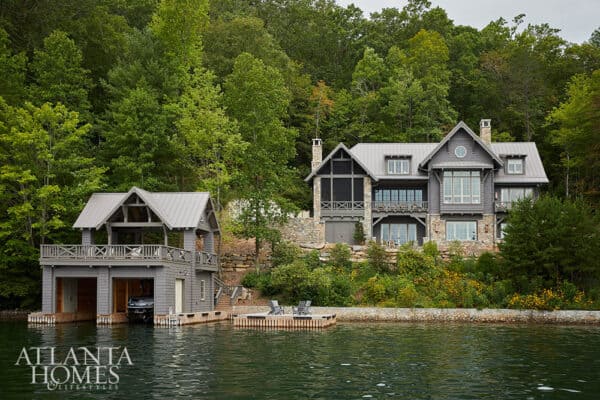
Puzzle Prefab is a prototype of modern architecture and sustainable living, designed by Wittman Estes in partnership with Sparrow Woodworks on Whidbey Island, Washington. It is energy-efficient and utilizes various sustainable materials, innovative systems, and building practices to reduce its environmental footprint.
Defined by flexibility, Puzzle Prefab took on the challenge of building dwellings that minimize environmental impact while fostering health and connection to nature for the inhabitants. A quarter of the size of the typical 2,000-square-foot American home, the prototype includes 600 square feet of living space attached to 557 square feet of covered outdoor space with cedar decks and soffits.
DESIGN DETAILS: ARCHITECTURE/INTERIOR DESIGN Wittman Estes STRUCTURAL ENGINEER Josh Welch Engineering BUILDER Sparrow Woodworks NET ZERO ENERGY CONSULTANT Erin Moore, FLOAT MECHANICAL ENGINEER Solarc Energy Group

A series of 4 modules makes this home infinitely reconfigurable, demonstrating prefabrication’s ability to create spaces that can sinuously expand and suit any environment, whether remote, suburban, or urban. Whidbey Puzzle Prefab seamlessly merges high-performance, sustainable design with endless customization and replication.

Puzzle Prefab is a carbon-negative prefab prototype organized around 4 modules for living, sleep/study, energy, and outdoor dining.

The modules are built on pin foundations, eliminating concrete and reducing CO2 emissions by 24 tons. A 4.1 kW solar array drives a heat pump with hydronic heating and cooling and energy recovery ventilation. Smart home controls monitor energy use and optimize conditioning to align with user comfort.

The architecture minimizes its footprint, sources local materials, is built off-site, and incorporates impermanent foundations – reducing the physical and visible impact on the project location.

This is a pilot project for the design team, which is tracking performance metrics and ensuring that the lessons inform each subsequent iteration of the previous home.

The project succeeded in building something replicable and flexible, net zero, and low-impact on the project site, creating a positive relationship between the build process, the environment, and the inhabitants for generations.

“It’s so compact that it feels enormous,” says architect Matt Wittman. “Prefab allows for higher-quality construction on a shorter timeline while respecting the fragile forest ecology by shifting the building process off-site.”

What We Love: Puzzle Prefab is an award-winning design that showcases the versatility of prefabricated housing made with sustainable materials. This prototype home lowers energy consumption and functions as a net-positive energy generator. It’s not just a house; it’s a blueprint for a more sustainable, intelligent, and harmonious way of living. We especially love how half this home’s floor plan lives outdoors, encouraging time spent with nature and a more peaceful way of life.
Tell Us: What do you think about the design of this prefabricated home? Let us know in the Comments below!
Note: Check out a couple of other amazing home tours that we have featured here on One Kindesign from the portfolio of the architects of this project, Wittman Estes: Craftsman style home gets modern update with rentable garden ADU in Seattle and A small rural retreat inspired by nature on the Hood Canal, Washington.


















PHOTOGRAPHER Andrew Pogue
CONSTRUCTION PHOTOS





PHOTOGRAPHER Dan Sutherland
DRAWINGS






Sustainability Highlights
Net Zero Energy Building Systems
A Life Cycle Analysis calculated cradle-to-gate global warming impacts and drove design decisions for the
foundation, floor assembly, wall assembly, roof assembly, and solar panel array. Air source heat pumps
with hydronic heating and cooling and energy recovery ventilation.
Solar Power
4.1 kW photovoltaic array produces 3,981 kWh/hr of energy.
Zero Concrete Foundation
Steel ground frame foundation system to eliminate the use of concrete. The hand-set micro pin piles
reduce earthwork disturbance to protect tree roots. The micro piles reduce the carbon footprint by 77%
relative to the equivalent concrete foundation.
High-Performance Building Envelope
Enhanced insulation, high R-values, and solar energy enabled the building to meet net-zero standards. The continuous roxul insulated thermal envelope with a tightly sealed liquid-applied weather-resistant barrier achieved below 1.5 air changes/hour.
Roof, R-50 (70% increase*)
Wall R-53 (200% increase*)
Floor R-38 (26% increase*)
* increased over the 2015 Washington State Energy Code (WSEC)
Rainwater Collection
Potable waster-safe roofing channels rainwater into steel columns that act both structurally and as
downspouts. The water is then stored in a rainwater tank and then purified with a custom water filtration
system, which makes it safe for potable use in kitchens, bathrooms, showers, washing machines, and
dishwashers. The water also goes to the indoor greenhouse for vegetable garden irrigation.
Small Footprint, Human-Centered Design
The tiny footprint reduces energy use, construction materials and creates an indoor/outdoor environment
that is healthier for occupants.
Smart Home Systems
Residents to harvest and store resources while monitoring consumption and managing personal comfort.
Indoor Outdoor Connections
The temperate site climate allowed 600 square foot core living spaces with 557 square foot covered outdoor adjacent space.
The Whidbey configuration is 70% smaller than the median US home size. Extensions and views of the outdoors were prioritized. Outdoor living on elevated covered cedar decks is treated equally as indoor living. Variable-width exterior cedar siding evokes different sizes of trees in the forest.
Finish Materials
International Living Future Institute (ILFI) Red-List Free for all interior materials
– Exterior siding: Tight Knot Cedar 1×6, semi-transparent stain, Benjamin Arbor Coat Silver Mist
– Doors: High-Performance Fiberglass Univeral Series by Cascadia – U value .25. Windows: High-Performance Fiberglass by Alpen Series 625 U value .16
– Roofing: Potable Water Safe TPO Membrane for Rainwater Capture
– Casework: Sustainably-sourced birch plywood, clear finish
– Flooring: FSC-Certified White Oak
– Ceiling: Locally sourced FSC Clear Cedar
– Counter: Blackened Stainless Steel
– Paint Color: Benjamin Moore Decorator’s White
– Bath Wall Tile: 1×1 White Ceramic Hex
– Sleeping Nook: Felted Wool wall panels
– Shower floor: Alaskan Yellow Cedar decking
– Plumbing Fixtures:
– Bathroom: Duravit Stark Dual Flush toilet,
– Bathroom: Kohler Stillness stainless steel Wall Mount bath faucet and shower trim
– Bathroom Duravit D-Code compact ceramic wall mount sink
– Kitchen faucet, Blanco Colina Classic Steel,
– Kitchen sink, Blanco stainless steel undermount sink
– Fireplace: Aeris Coccon Bioethanol
– Electrical Fixtures:
– Bathroom: Crisp LED Flushmount Bath wall sconce by RBW,
– Dining Scone: Aplomb Concrete Suspension Lamp by Paolo Lucici and Luca Pevere
– Bed and Living Sconce: Estiluz Volta Wall Lamp
Landscape Materials
– Exterior Decking: Tight Knot Red Cedar
– Native Planting: Deer Ferns, Salal, Vine Maples
Furnishings
– Sofa: Custom pull-out bed
– Dining Table:
– Dining Chairs Bertoia Wire Dining Chairs
– Eames LCW Lounge Chair in Walnut
– Eames Wire base low table
– Kinto Luna Vases
“This project shows how innovative prefab construction can be. This could be placed anywhere with little disruption to the natural ecosystem and landscape.” –2024 AIA National Small Project Award – Jury
One Kindesign has received this project from our submissions page. If you have a project you would like to submit, please visit our submit your work page for consideration!







2 comments